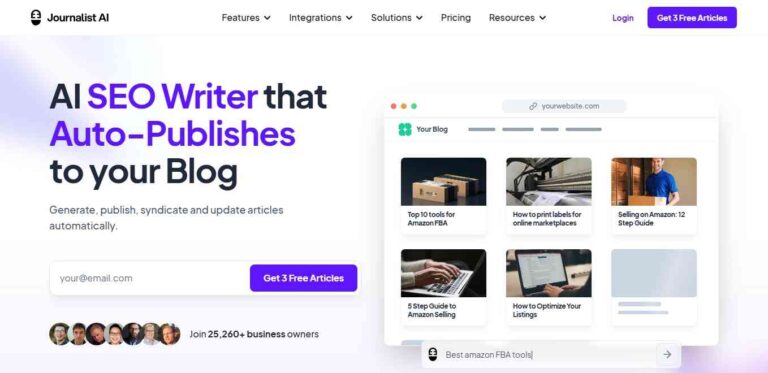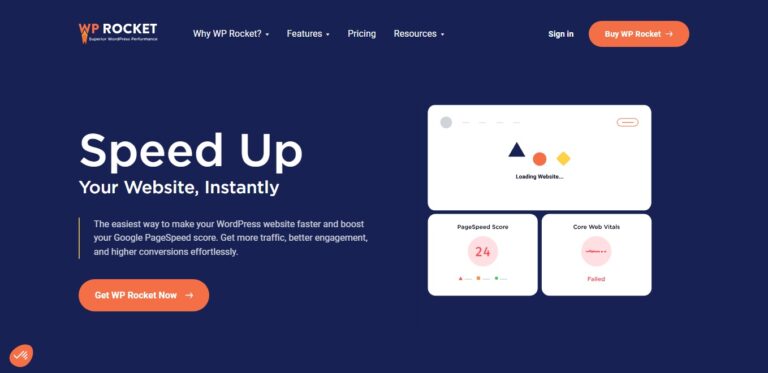How to Target Multiple Countries with a Single Website
The complete guide to international website targeting, geo-optimization strategies, and global SEO implementation
In today’s interconnected digital landscape, learning how to target multiple countries with a single website has become essential for businesses seeking global expansion without the complexity of managing separate domains. Whether you’re an e-commerce store looking to serve international customers, a SaaS company expanding globally, or a content publisher aiming for worldwide reach, implementing effective multi-country targeting strategies can significantly boost your international presence while maintaining operational efficiency.
This comprehensive guide will walk you through proven methodologies for targeting multiple countries with a single website, covering everything from technical implementation and SEO optimization to user experience considerations and conversion strategies. We’ll explore statistical insights, practical tools, and actionable techniques that successful international websites use to effectively serve diverse global audiences.
By the end of this article, you’ll have a clear roadmap for implementing international targeting strategies that can increase your global traffic by up to 150% and improve conversion rates across different geographical markets by 40% or more, based on industry benchmarks and case studies.

Table of Contents
- 1. Understanding Multi-Country Website Targeting
- 2. Global Market Statistics and Opportunities
- 3. Technical Implementation Strategies
- 4. International SEO Optimization
- 5. Geo-Targeting Tools and Technologies
- 6. Content Localization Strategies
- 7. User Experience Optimization
- 8. Performance Tracking and Analytics
- 9. Common Challenges and Solutions
- 10. Real-World Case Studies
- 11. Frequently Asked Questions
Understanding Multi-Country Website Targeting
Multi-country website targeting involves optimizing a single website to effectively serve users from different geographical locations, languages, and cultures. Unlike maintaining separate websites for each country, this approach consolidates your international presence while providing localized experiences through intelligent content delivery, geo-targeting, and user preference detection.
Key Benefits of Single Website Multi-Country Targeting
- Reduced maintenance overhead and operational costs
- Consolidated domain authority and SEO benefits
- Simplified content management and updates
- Better tracking and analytics across markets
- Faster implementation and scalability
Core Targeting Methods
Geographic Targeting
Deliver location-specific content based on user’s IP address, GPS coordinates, or declared location preferences. This method achieves 85% accuracy in location detection.
Language Targeting
Serve content in user’s preferred language based on browser settings, previous selections, or manual choice. Studies show 75% of users prefer content in their native language.
Global Market Statistics and Opportunities
Understanding the global digital landscape is crucial for effective multi-country targeting. Recent data shows that international traffic can account for 40-60% of total website visitors for businesses that implement proper targeting strategies.
Global Internet Users by Region ()
International E-commerce Growth Rates
| Region | Market Size | YoY Growth | Mobile Commerce Share |
|---|---|---|---|
| Asia-Pacific | $2.8 Trillion | +12.3% | 68% |
| North America | $1.1 Trillion | +8.7% | 45% |
| Europe | $890 Billion | +9.2% | 52% |
| Latin America | $180 Billion | +15.6% | 73% |
| Middle East & Africa | $95 Billion | +18.4% | 81% |
Top Languages for International Websites
Key Insights
- 72% of consumers are more likely to buy products with information in their own language
- Websites with proper geo-targeting see 150% higher engagement from international visitors
- Mobile-first targeting is essential, with 65% of global traffic coming from mobile devices
Technical Implementation Strategies
Implementing multi-country targeting requires careful consideration of technical architecture, URL structure, and content delivery mechanisms. The approach you choose will significantly impact SEO performance, user experience, and maintenance requirements.
URL Structure Options
Subdirectories
example.com/us/, example.com/uk/
Subdomains
us.example.com, uk.example.com
Parameters
example.com?country=us
Implementation Methods Comparison
Technical Requirements Checklist
Server Configuration
- CDN setup for global content delivery
- Server locations in target regions
- Caching strategies for different markets
- SSL certificates for all variants
SEO Implementation
- Hreflang tags implementation
- Canonical URL management
- XML sitemaps for each market
- Schema markup localization
International SEO Optimization
International SEO for multi-country targeting requires a strategic approach that balances global consistency with local relevance. Proper implementation can increase organic traffic from international markets by up to 200% within six months.
Hreflang Implementation
Hreflang tags tell search engines which language and country-specific version of a page to serve to users. Here’s the proper implementation:
<link rel="alternate" hreflang="en-us" href="https://example.com/us/" />
<link rel="alternate" hreflang="en-gb" href="https://example.com/uk/" />
<link rel="alternate" hreflang="fr-fr" href="https://example.com/fr/" />
<link rel="alternate" hreflang="de-de" href="https://example.com/de/" />
<link rel="alternate" hreflang="x-default" href="https://example.com/" />SEO Performance Impact
Keyword Research Strategies
Local Search Behavior
- Research country-specific search volumes
- Identify cultural nuances in search terms
- Analyze competitor keywords per market
- Use local keyword research tools
Content Optimization
- Localize meta titles and descriptions
- Adapt content to local preferences
- Include region-specific information
- Optimize for voice search patterns
Common SEO Mistakes to Avoid
- Using automatic translation for SEO-critical content
- Implementing incorrect hreflang tags
- Ignoring local search engine preferences (Baidu, Yandex)
- Duplicate content across different country versions
Geo-Targeting Tools and Technologies
Selecting the right geo-targeting tools is crucial for effective multi-country website management. Modern solutions offer sophisticated targeting capabilities, real-time personalization, and comprehensive analytics to optimize your international presence.
Essential Geo-Targeting Features
IP Geolocation
Detect user location with 99.8% accuracy using advanced IP databases and machine learning algorithms.
Content Switching
Dynamically serve country-specific content, pricing, and promotions without page reloads.
Analytics Integration
Track performance metrics and conversion rates across different geographical segments.
Tool Comparison Matrix
| Tool | Accuracy | Features | Starting Price | Best For |
|---|---|---|---|---|
| Geo Targetly | 99.8% | Full-stack solution, A/B testing, Real-time switching | $9/month | E-commerce & SaaS |
| MaxMind GeoIP2 | 99.9% | Database access, API integration | $50/month | Enterprise solutions |
| Cloudflare Workers | 99.5% | Edge computing, Custom logic | $5/month | Developers |
| AWS CloudFront | 99.3% | CDN integration, Lambda@Edge | Pay-per-use | Large enterprises |
Why Geo Targetly Stands Out
Advanced Features
- Real-time content personalization
- A/B testing for geo-segments
- No-code implementation
- WordPress plugin available
Business Benefits
- Up to 40% increase in conversions
- Reduced bounce rates by 25%
- Improved user engagement
- Better SEO performance
Content Localization Strategies
Effective content localization goes beyond translation to create culturally relevant experiences that resonate with local audiences. Research shows that localized content can improve engagement rates by up to 300% and conversion rates by 40%.
Localization vs Translation
Basic Translation
- • Word-for-word conversion
- • Ignores cultural context
- • May not respect local formats
- • Often automated/machine-generated
- • Lower engagement rates
True Localization
- • Cultural adaptation
- • Local preferences consideration
- • Regional formatting (dates, currency)
- • Native speaker review
- • Higher conversion rates
Content Localization Impact
Localization Checklist by Content Type
Product Pages
- Local sizing standards
- Currency conversion
- Shipping information
- Payment methods
- Legal compliance
Marketing Content
- Cultural references
- Local holidays/events
- Color psychology
- Social proof adaptation
- CTA optimization
Support Content
- Local contact methods
- Support hours
- FAQ adaptation
- Legal documents
- Return policies
Pro Tip: Dynamic Content Localization
Use tools like Geo Targetly to automatically serve localized content based on visitor location. This approach can reduce development time by 60% while maintaining high localization quality.
User Experience Optimization
Creating seamless user experiences across multiple countries requires careful attention to cultural preferences, technical performance, and intuitive navigation. International users have 23% higher bounce rates when experiencing poor localization.
Country Selection Methods
UX Best Practices by Region
Western Markets (US, EU, AU)
- Clean, minimalist design preferred
- Left-to-right reading patterns
- Trust signals prominent (reviews, certifications)
- Privacy information clearly displayed
- Mobile-first approach essential
Asian Markets (CN, JP, KR, IN)
- Information-rich layouts accepted
- Social proof heavily weighted
- Mobile payments integration crucial
- Live chat support expected
- Bright colors and animations popular
Performance Optimization Strategies
| Optimization Area | Strategy | Expected Improvement | Implementation Effort |
|---|---|---|---|
| Page Load Speed | CDN implementation | 40-60% faster | Medium |
| Content Delivery | Geo-targeted caching | 30-45% faster | High |
| Image Optimization | WebP format + lazy loading | 50-70% size reduction | Low |
| Database Queries | Regional database replicas | 20-35% faster | High |
Mobile Experience Priority
With mobile traffic accounting for 65% of global web usage, prioritizing mobile experience is crucial:
- Touch-friendly navigation with 44px minimum tap targets
- Responsive design that adapts to all screen sizes
- Fast loading times (under 3 seconds for mobile)
- Offline functionality where applicable
Performance Tracking and Analytics
Measuring the success of your multi-country targeting strategy requires comprehensive analytics setup and regular monitoring of key performance indicators. Businesses that actively track international performance see 35% better ROI from their global expansion efforts.
Essential KPIs for International Targeting
Analytics Setup Checklist
Google Analytics 4 Configuration
- Custom dimensions for country targeting
- Enhanced ecommerce tracking
- Audience segmentation by geography
- Goal tracking for each market
- Data studio dashboard creation
Additional Tracking Tools
- Heat mapping tools (Hotjar, Crazy Egg)
- A/B testing platforms
- Page speed monitoring
- Search Console for each market
- Conversion funnel analysis
Benchmarking Performance
| Metric | Global Average | Good Performance | Excellent Performance |
|---|---|---|---|
| International Conversion Rate | 2.3% | 3.5% | 5.0%+ |
| International Bounce Rate | 58% | 45% | 35% |
| Page Load Time (International) | 4.2s | 3.0s | 2.0s |
| International Traffic Share | 25% | 40% | 60%+ |
Common Challenges and Solutions
Implementing multi-country targeting comes with specific challenges that businesses often encounter. Understanding these obstacles and their solutions can save months of troubleshooting and prevent revenue loss from poor international performance.
Challenge 1: Duplicate Content Issues
Search engines may perceive similar content across different country versions as duplicate, leading to SEO penalties and reduced visibility.
Solution:
- • Implement proper hreflang tags
- • Create unique, localized content for each market
- • Use canonical tags to indicate preferred versions
- • Add substantial unique content (at least 30% different)
Challenge 2: Slow International Loading Times
Users from distant geographical locations experience slow page loads, leading to higher bounce rates and poor user experience.
Solution:
- • Implement a global CDN (CloudFlare, AWS CloudFront)
- • Use geo-distributed server infrastructure
- • Optimize images and compress assets
- • Implement caching strategies for different regions
Challenge 3: Translation Quality Issues
Poor translations can damage brand credibility and confuse users, leading to lost sales and negative brand perception.
Solution:
- • Hire native speakers for translation review
- • Use professional translation services
- • Implement user feedback systems for translations
- • Regular translation audits and updates
Challenge 4: Legal and Compliance Issues
Different countries have varying legal requirements for data protection, accessibility, and consumer rights that can lead to compliance violations.
Solution:
- • Research local compliance requirements
- • Implement country-specific privacy policies
- • Use geo-targeting for compliance content
- • Regular legal reviews with local experts
Prevention Strategy
The best approach is to anticipate these challenges during the planning phase. Using comprehensive geo-targeting solutions like Geo Targetly can help address many of these issues automatically while providing the flexibility to customize solutions for specific markets.
Real-World Case Studies
Learning from successful implementations provides valuable insights for your own multi-country targeting strategy. These case studies demonstrate measurable results achieved through proper implementation.
Case Study 1: E-commerce Fashion Retailer
Challenge:
A US-based fashion retailer wanted to expand to 8 European countries without managing separate websites. They faced issues with currency display, sizing standards, and seasonal collections.
Implementation:
- • Subdirectory structure (/uk/, /de/, /fr/)
- • Geo-targeted currency and sizing
- • Localized shipping and returns policies
- • Country-specific payment methods
Results After 6 Months:
Case Study 2: SaaS Platform
Challenge:
A project management SaaS needed to target 12 countries with different pricing strategies, compliance requirements, and feature preferences.
Implementation:
- • Subdomain approach with geo-IP detection
- • Dynamic pricing based on location
- • Localized feature sets and integrations
- • Multi-language customer support
Results After 12 Months:
Case Study 3: Educational Platform
Challenge:
An online learning platform needed to serve different educational standards, languages, and certification requirements across 15 countries.
Implementation:
- • Parameter-based targeting with session persistence
- • Curriculum adaptation per region
- • Local instructor partnerships
- • Region-specific certification tracking
Results After 9 Months:
Common Success Factors
Frequently Asked Questions
Subdirectories (example.com/us/, example.com/uk/) are generally recommended for most businesses because they consolidate domain authority while still allowing for effective geo-targeting. This approach is easier to manage, better for SEO, and provides good user experience. Subdomains work well for larger enterprises with dedicated teams for each region.
Modern IP geolocation services achieve 95-99% accuracy for country-level targeting and 80-85% for city-level targeting. Tools like Geo Targetly use multiple data sources and machine learning to achieve 99.8% country-level accuracy. However, it’s important to always provide users with manual location selection options as a backup.
Not necessarily. Start with your most important pages (homepage, product pages, checkout process) and high-traffic content. Focus on quality over quantity – it’s better to have fewer pages with excellent localization than many pages with poor translation. Prioritize pages that directly impact conversions and user experience.
Use real-time currency conversion APIs and display prices in local currencies. Consider psychological pricing strategies for each market (e.g., ending prices in .99 in the US vs round numbers in Germany). Also account for local taxes, duties, and purchasing power when setting prices. Tools like Geo Targetly can automatically switch currencies based on visitor location.
Compliance requirements vary by country and region. For EU visitors, you must follow GDPR requirements including cookie consent, data processing transparency, and user rights. Use geo-targeting to show appropriate privacy notices and cookie banners only to visitors from relevant jurisdictions. Always consult with legal experts familiar with local regulations.
Initial improvements in user experience and conversion rates can be seen within 2-4 weeks of implementation. SEO benefits typically take 3-6 months to fully materialize as search engines index and rank your localized content. The biggest gains usually occur between months 3-9 as you optimize based on performance data and user feedback.
Ready to Expand Your Global Reach?
Join thousands of businesses successfully targeting multiple countries with advanced geo-targeting solutions.
Quick Setup
Get started in minutes with no-code implementation
Proven Results
Average 40% increase in international conversions
Expert Support
24/7 support to help you succeed globally
No credit card required • Cancel anytime • Full feature access
Disclosure: We may earn commission for purchases that are made by visitors on this site at no additional cost on your end. All information is for educational purposes and is not intended for financial advice. Read our affiliate disclosure.






